Special Sessions
Special Session 1: Modeling Challenges in the Emerging Internet Applications
Organizer: Phuoc Tran-Gia (University of Wuerzburg, Germany)
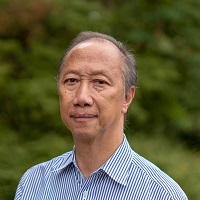
Prof. Phuoc Tran-Gia is professor emeritus of Computer Networks with the Institute of Computer Science, University of Würzburg, Germany.
Onno Boxma(Eindhoven University of Technology) - Redundancy scheduling

Onno Boxma is emeritus professor of Stochastic Operations Research in the Department of Mathematics and Computer Science
of Eindhoven University of Technology. His main research interests are in queueing theory and its applications to the performance analysis
of computer-, communication-, production- and traffic systems.
During 2004-2009 he was editor-in-chief of Queueing Systems, and
from 2005 till 2011 he acted as scientific director of Eurandom.
Onno Boxma has received honorary doctorates from the University of Haifa and Heriot-Watt University (Edinburgh),
and was recipient of the 2011 ACM SIGMETRICS Achievement Award and the 2014 Arne Jensen Lifetime Award of ITC.
Abstract of the talk: Redundancy scheduling has emerged as a powerful strategy for improving response times in parallel server systems. The key feature in redundancy scheduling is replication of a job upon arrival by dispatching replicas to different servers. Redundant copies are removed as soon as the first of these replicas completes service.
Analytical results for redundancy scheduling are scarce. Even for the sta- bility condition only some partial results have been obtained. In this talk we shall consider some performance issues of redundancy scheduling, focussing on a rather general model in which there may be several types of jobs and in which the speeds of different servers for a job type may also differ. We shall in particular pay attention to the learning aspect in case the job types and/or the speeds of the various servers are not a priori known.
Note: This talk is based on joint work with Sem Borst and Youri Raaijmakers.
John Daigle (University of Mississippi) - Role of Classical Methods in Supporting Emerging 5G-based Applications

John N. Daigle (M’68-SM’84-F’93-LF’11) is Distinguished University Professor of Electrical Engineering
and Assistant Director of the Broadband Wireless Access and Applications Center at the University of
Mississippi, Oxford. He was formerly a Principal Engineer for the MITRE Corporation in McLean, Virginia,
where he was responsible for research direction in the MITRE Washington Networking Technical Center.
His experience in electrical communications dates back to 1970 and includes experience both in industry and
academia.
Prof. Daigle has taught in a wide variety of areas related to computing and communications. His research
results have been published in leading IEEE technical conferences and IEEE and ORSA journals. He is also
the author of the text books Queueing Theory for Telecommunications, published by Addison-Wesley and
Queueing Theory with Applications to Packet Telecommunication, published by Springer-Science+Business
Media.
Prof. Daigle has been active in IEEE’s activities. He has served as Editor-in-Chief of IEEE Network
and IEEE Communication Surveys and Tutorials and in other editorial capacities. He served on the IEEE
Communications Society’s Board of Governors as well as OpCom and has served on numerous technical
program committees of IEEE conferences. He is a past chairman of the Society’s Technical Committee on
Computer Communications and received the 2004 Outstanding Service Award in recognition of his long-time
contributions and service to the TCCC.
Prof. Daigle was a visiting researcher at IBM Zurich Research Laboratory (summers 1999-2001) and
at the University of Perugia (summer 2002). More recently he was an Erskine Fellow at the University
of Canterbury (summer 2009), where he taught software defined radio. He holds BS and MS degrees in
electrical engineering from Louisiana Tech University and VPI & SU, respectively. His doctorate, from
Columbia University, is in operations research.
Abstract of the talk: We begin with a high level overview of networking from the perspective of supporting emerging 5G applications in consideration of emerging technologies including but not limited to network function virtualization and software defined networking. A small number of areas within the core network that appear to be critical to performance at the application level will be identified, and performance modeling requirements for achieving meaningful contributions in those areas will be discussed. The potential role of classical probabilistic and optimization modeling tools in combination with live measurements for developing performance insights that help to stay ahead of the performance curve will be discussed. A perspective on the future role of analytical modeling based on this limited study will be drawn.
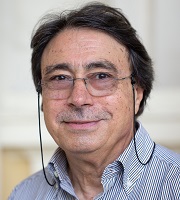
Franco Davoli is Professor Emeritus at the University of Genoa, Department of Electrical, Electronic and Telecommunications Engineering, and Naval Architecture (DITEN), and Head of the National Laboratory of Smart and Secure Networks (S2N) of CNIT (National Inter-University Consortium for Telecommunications), based in Genoa, Italy. His current research interests are in dynamic resource allocation in multiservice networks, the Future Internet, 5G networks and beyond, satellite networks, and flexible, programmable and energy-efficient networking. In 2004 and 2011 he was Visiting Erskine Fellow at the University of Canterbury, Christchurch, New Zealand. He is a Life Senior Member of the IEEE.
Abstract of the talk: The convergence of fixed and mobile networks toward programmable networking platforms based on functionalities implemented for the most part by Virtual Entities (VEs) running on a general-purpose hardware infrastructure is posing new challenges to the designer of control strategies that aim at optimizing the trade-off between performance and power consumption. Indeed, attributing the power consumed by the hardware to specific VEs becomes much more difficult than in networking architectures where the same functionalities are performed by dedicated equipment (e.g., routers or L2 switches). The talk will explore some of the issues that this environment poses on finding suitable traffic and power models to be used for control and lifecycle management of Virtual Network Functions (VNFs).
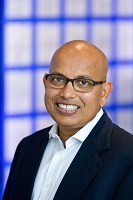
Nikhil Jain serves as vice president of technology at Qualcomm Technologies, Inc., where he is responsible for chips and technology that go into the wearable and Internet of Things (IOT) Products. Nikhil worked on some of the pioneering smartwatch when they were first made. One of his efforts delivered the Qualcomm’s Toq™ smartwatch. Toq was rated by Popular Science magazine as one of the “Top 100” gadgets to buy in Dec. 2013. In addition Toq won the 2014 Computex d&i Award and the Edison Award for innovation. His leadership on wearable products has enabled Qualcomm to become the market leader in chips that go into wearable. Nikhil also currently leads the system design work for applying IOT technology to transform industries like retail, energy, medicine to wireless and artificial intelligence.
In the past Nikhil worked on CDMA during its initial days to help develop and deploy it. His work on open market handsets resulted in cost reductions of CDMA handsets from $100 to $40, this allowed the subscribers in developing country to scale and make wireless the main mode of communication in those countries. He also has invented key technologies that helped evolve wireless architecture to 5G.
Nikhil joined Qualcomm in 1998 as senior staff engineer and has held roles of increasing responsibility since that time. In 2006 he was the chief technology advisor for Qualcomm India. During this time he help create the fisherman’s phone in India that helped improve safety for fisherman along the east cost of India and saved lives. Prior to joining Qualcomm, Nikhil served as a senior member of the technical staff and manager of wireless system engineering for Northern Telecom.
Nikhil holds a bachelor’s degree in electrical engineering from Indian Institute of Technology, Madras, a master’s degree in computer information systems and finance from University of Rochester, and a Ph.D. in industrial and systems engineering from Virginia Polytechnic Institute and State University. He is also a graduate of the Stanford Executive Program. Nikhil has been awarded over 70 patents.
Abstract of the talk: We have one planet that we can call our home. Yet we are not able to protect it from destruction. We have a desire as humanity to do better but are confounded by boundaries of nations and lack of frameworks to take hard steps. Earth 2.0 is an effort pioneered to build utilities for the planet that help users to confront and solve some of the hard problems that the world is currently encountering; namely, pollution, income-disparity, poverty etc.
For many of these hard problems we have a view from each of our vantage point and corresponding helplessness to handle the scale. We feel like a group of people on an island struggling to survive. To survive and thrive, we need tools to organize resources, share stories of survival and problems, and a to document and distribute actionable knowledge. These utilities for the world are being developed as collaborative effort by many different folks and is organized as Earth 2.0 (earth2.ucsd.edu)
Just as this idea was emerging the world was jolted with the COVID calamity. COVID became the first problem for earth 2.0 to work on. As part of the effort we created three tools, Corespond, Oassis and Homebound. The talk will present these tools and talk about how plugins are being conceived that would allow sophisticated disease modeling tools and behavior prediction/prevention tools would be integrated.
This framework is an innovative way for modern operational scientists to collect data, develop predictive models and then provide actionable knowledge at scale to help humanity. This construct can evolve to many different scenarios. The talk is an invitation for people to join the effort and leverage the situational data to develop useful models and algorithms to help humanity.
Special Session 2: 6G/AI
Organizer: Merouane Debbah (CentraleSupélec) and Alessio Zappone (University of Cassino and Southern Lazio)
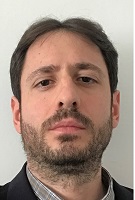
Alessio Zappone received his Ph.D. from the University of Cassino and Southern Lazio (Cassino, Italy). In 2012 he has worked with the Consorzio Nazionale Interuniversitario per le Telecomunicazioni (CNIT) in the framework of the FP7 EU-funded project TREND. From 2012 to 2016 he has been with the Dresden University of Technology, managing the project CEMRIN, funded by the German research foundation (DFG). In 2017 he was the recipient of the H2020 Marie Curie IF BESMART fellowship for experienced researchers, carried out at the LANEAS group of CentraleSupelec (Gif-sur-Yvette, France). Since 2019, he is a tenured assistant professor at the University of Cassino and Southern Lazio.
His research interests lie in the area of communication theory and signal processing, with main focus on optimization techniques for resource allocation and energy efficiency maximization. He held several research appointments at international institutions. He serves as senior area editor for the IEEE Signal Processing Letters and has served twice as guest editor for the IEEE Journal on Selected Areas on Communications.
Honggang Zhang (Zhejiang University) - Stigmergic Reinforcement Learning with Multi-Agent Collaboration for 6G Networks
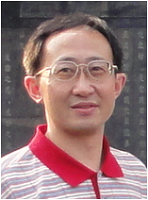
Honggang Zhang is a Full Professor of College of Information Science and Electronic Engineering as well as the Co-Director of York-Zhejiang Lab for Cognitive Radio and Green Communications at the Zhejiang University, China. He was an International Chair Professor, CominLabs Excellence Center, Université Européenne de Bretagne (UEB) & Supélec, France (2012-2014). He is an Honorary Visiting Professor of the University of York, UK. He received the Ph.D. degree in Electrical Engineering from Kagoshima University, Japan, in March 1999. From October 1999 to March 2002, he was with the Telecommunications Advancement Organization (TAO) of Japan, as a TAO Research Fellow. From April 2002 to November 2002, he joined the TOYOTA IT Centre. From December 2002 to August 2004, he has been with the UWB Research Consortium, Communications Research Laboratory (CRL) and National Institute of Information and Communications Technology (NICT) of Japan. He was the principle contributor for proposing DS-UWB in IEEE 802.15 WPAN UWB standardization task group. From September 2004 to February 2008, he has been with CREATE-NET (Italy), where he leaded its wireless team in exploring Cognitive Radio and UWB technologies while participated the European FP6/FP7 projects (EUWB, PULSERS2).
Dr. Honggang Zhang has served as the Chair of the Technical Committee on Cognitive Networks (TCCN) of IEEE Communications Society during 2011-2012. He was the Co-Chair of IEEE Globecom 2008 Symposium and IEEE ICC 2013 Symposium. He was the founding TPC Co-Chair of CrownCom 2006 and the Steering Committee Member of CrownCom 2006-2009. He was the General Co-Chair of IEEE GreenCom 2010, the TPC Co-Chair of IEEE OnlineGreenComm 2014, and the General Co-Chair of IEEE OnlineGreenComm 2015. He was the Series Editor of IEEE Communications Magazine (Green Communications and Computing Networks Series). He is the co-editor/co-author of two books with the titles of “Cognitive Communications - Distributed Artificial Intelligence (DAI), Regulatory Policy & Economics, Implementation” (Wiley Press) and “Green Communications: Theoretical Fundamentals, Algorithms and Applications” (CRC Press), respectively. He is the AEiC (Associate Editor-in-Chief) of China Communications (co-sponsored by IEEE and China Institute of Communications).
Abstract of the talk: Anticipating the rapid evolution of wireless mobile applications in forthcoming 6G networks, it emerges stronger incentive to design intelligent collaboration mechanisms among the distributed mobile agents. Following their individual observations, multiple intelligent mobile agents could effectively cooperate and efficiently approach the final common objective through collective learning from the environment. Up to date, independent reinforcement learning (IRL) has often been deployed within the multi-agent collaboration to alleviate the dilemma of non-stationary learning environment. However, behavioral strategies of the intelligent mobile agents in IRL could only be formulated upon their local individual observations of the global environment, and appropriate communication mechanisms must be established to reduce their behavioral localities.
In this speech, we tackle the challenging communication problem among the distributed mobile agents in highly mobile networks by jointly adopting two advanced mechanisms with different scales. For the large scale, we introduce the stigmergy mechanism as an indirect communication bridge among the independent learning agents and carefully design a mathematical representation to indicate the impact of digital pheromone. For the small scale, we propose a conflict-avoidance mechanism between adjacent mobile agents by implementing an additionally embedded neural network to provide more opportunities for participants with higher action priorities. Besides, we also design a federal training method to effectively optimize the neural networks within each mobile agent in a decentralized manner. Finally, we establish a testing platform where a number of mobile agents in a certain area move automatically to form a specified target shape, and demonstrate the superiorities of our proposed methods.
Tony Quek (Singapore University of Technology and Design) - Modeling, Learning, and Control in 6G

Tony Q.S. Quek received the B.E. and M.E. degrees in Electrical and Electronics Engineering from Tokyo Institute of Technology, Tokyo, Japan, respectively. At Massachusetts Institute of Technology (MIT), Cambridge, MA, he earned the Ph.D. in Electrical Engineering and Computer Science. Currently, he is the Cheng Tsang Man Chair Professor with Singapore University of Technology and Design (SUTD). He also serves as the Head of ISTD Pillar, Sector Lead for SUTD AI Program, and the Deputy Director of SUTD-ZJU IDEA. His current research topics include wireless communications and networking, big data processing, network intelligence, URLLC, and IoT.
Abstract of the talk: Claude Shannon founded information theory with a landmark paper “A Mathematical Theory of Communication” that he published in 1948, which is the fundamental cornerstone of today’s communication systems. At the same time, Norbert Wiener published his book “Cybernetics; or, Control and Communication in the Animal and the Machine”, which established the science of cybernetics. Interestingly, these two fields have developed in parallel and we are seeing the possible intersection of these two fields in future wireless systems or 6G. In this talk, we will motivate the need to understand modeling, learning, and control in future wireless systems by sharing some preliminary results in this area.